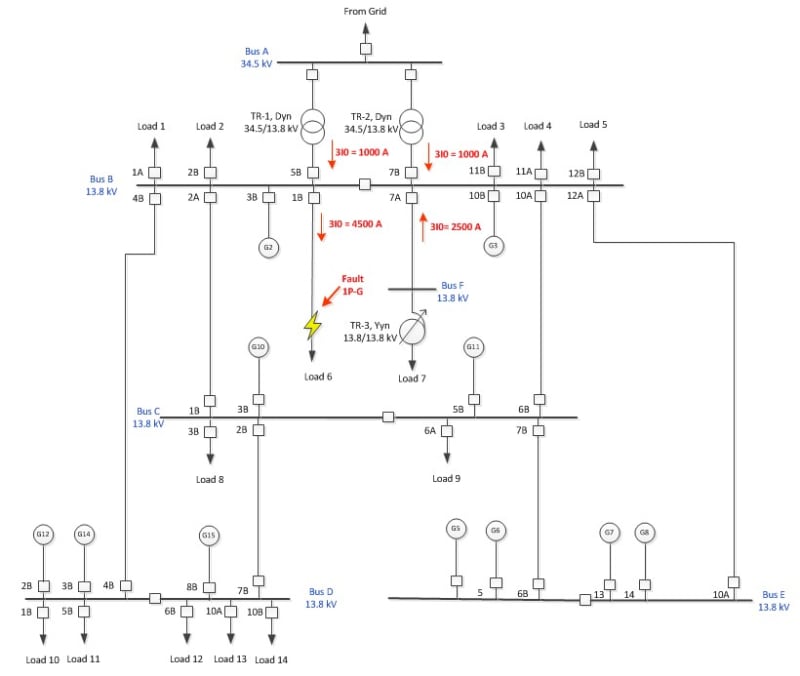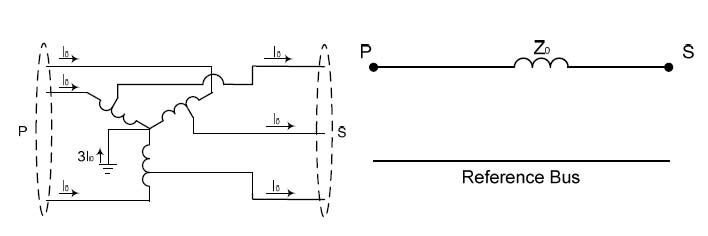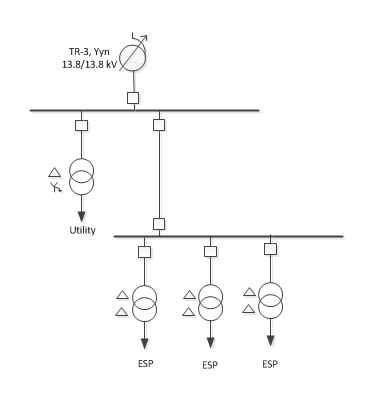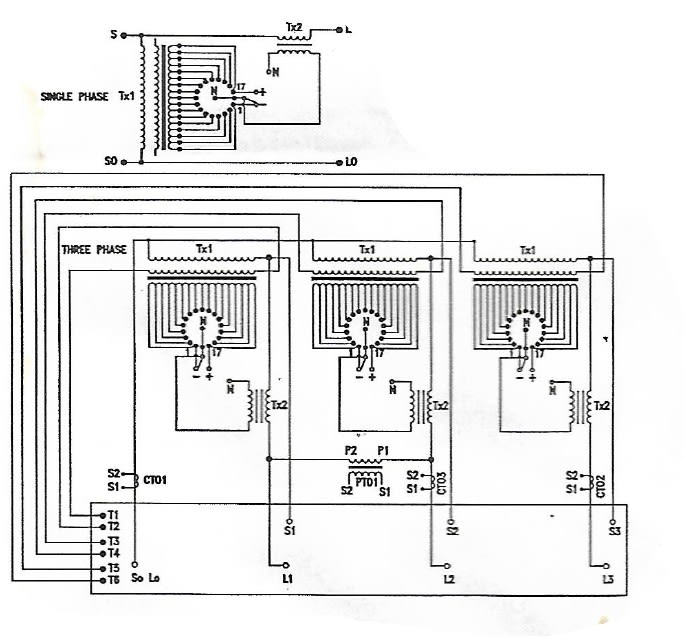anggap
Electrical
- Jun 28, 2018
- 27
Hi all,
Recently there was single line to ground fault in my plant, below is the current based on the actual record on related relays:

* TR1 and TR2 LV winding are connected to ground with low resistance NGR (1000A
* Neutral point of generators are connected to ground with high resistance NGR (10A)
* TR3 is single winding autotransformer with no tertiary winding, the neutral point is solid grounded
Based on coordination relay study on easy power, it supposed to be no current flow at feeder 7A Bus B during fault at feeder 1B's downstream. But actually there is zero sequence current flow at that feeder which caused breaker 7B tripped by 50N relay.
note: in simulation I modeled TR-3 with two winding Yyn Transformer
Is it wrong to modeled the transformer (TR3) with two winding Yyn Transformer? because there is no single winding autotransformer in easy power.
I modeled it with two winding Yyn Transformer because the zero sequence circuit are the same.

Please advise
Thanks
Recently there was single line to ground fault in my plant, below is the current based on the actual record on related relays:

* TR1 and TR2 LV winding are connected to ground with low resistance NGR (1000A
* Neutral point of generators are connected to ground with high resistance NGR (10A)
* TR3 is single winding autotransformer with no tertiary winding, the neutral point is solid grounded
Based on coordination relay study on easy power, it supposed to be no current flow at feeder 7A Bus B during fault at feeder 1B's downstream. But actually there is zero sequence current flow at that feeder which caused breaker 7B tripped by 50N relay.
note: in simulation I modeled TR-3 with two winding Yyn Transformer
Is it wrong to modeled the transformer (TR3) with two winding Yyn Transformer? because there is no single winding autotransformer in easy power.
I modeled it with two winding Yyn Transformer because the zero sequence circuit are the same.

Please advise
Thanks



